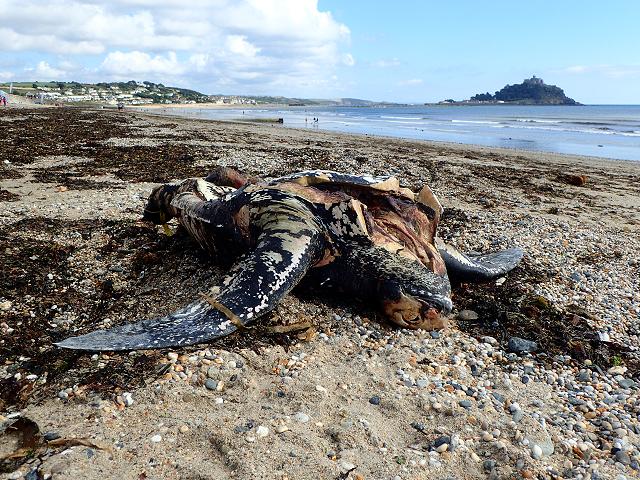
APHOTOMARINE
An educational resource dedicated mainly to the photography
and diversity of marine life that can be found in coastal waters
and intertidal areas of Great Britain and Ireland by David Fenwick.

Dermochelys coriacea (Vandelli, 1761) - Leatherback sea turtle (Sea turtle images)
Scroll down and rollover titles to change screen image or click on title to view image.
Leatherback sea turtle
Dermochelys coriacea
- dead stranding Marazion 1
Dermochelys coriacea
- dead stranding Marazion 1
Leatherback sea turtle
Dermochelys coriacea
- dead stranding Marazion 2
Leatherback sea turtle
Dermochelys coriacea
- dead stranding Marazion 3
Leatherback sea turtle
Dermochelys coriacea
- dead stranding Marazion 4
Leatherback sea turtle
Dermochelys coriacea
- dead stranding / head 1
Leatherback sea turtle
Dermochelys coriacea
- group of Turtle barnacles, Stomatolepas elegans 1
Leatherback sea turtle
Dermochelys coriacea
- Turtle barnacle, Stomatolepas elegans 1
The dead stranded Leatherback Turtle above was photograph post necropsy. The animal was found to contain plastic bag but died as a result of being struck by a boat or ship. It was photographed near Long Rock Station, Marazion, Cornwall, 13.08.18. The specimen was found to have nine Turtle barnacles, Stomatolepas elegans, attached under it front fins.
Leatherback sea turtle
Dermochelys coriacea
- dead stranding Portreath 1
Leatherback sea turtle
Dermochelys coriacea
- dead stranding Portreath 2
A decomposing specimen was sadly found in the harbour at Portreath, Cornwall, 10.09.17.
Thanks to Treve Opie for allowing the use of his images on this page. Both the turtle images are ©Treve Opie and may not be used for any other purpose without written consent.

The main objective of this website is in furthering environmental awareness and education through the medium of photography. To increase awareness and access to the wildlife of the region and help
people find and identify it. Sometimes the difference between species is obvious but many species can only be determined by observing microscopic characteristics that are specific to any one species.